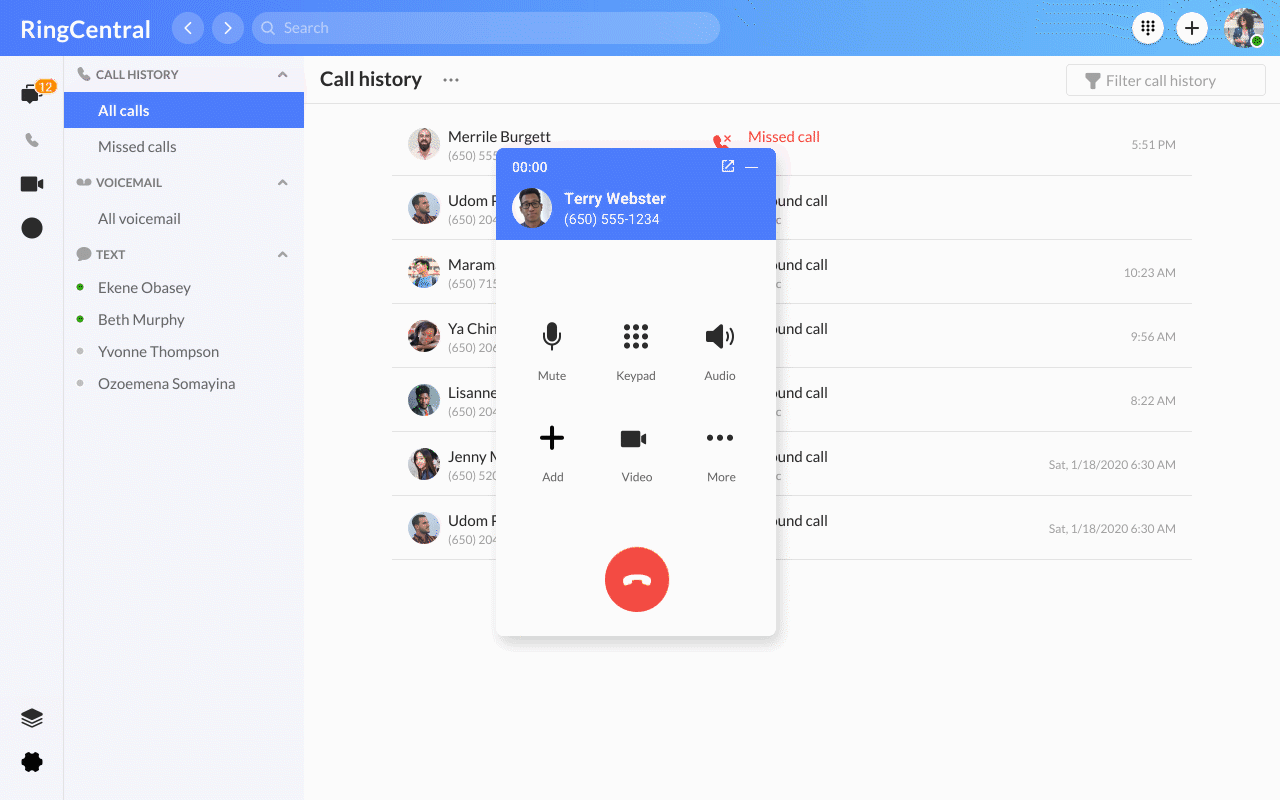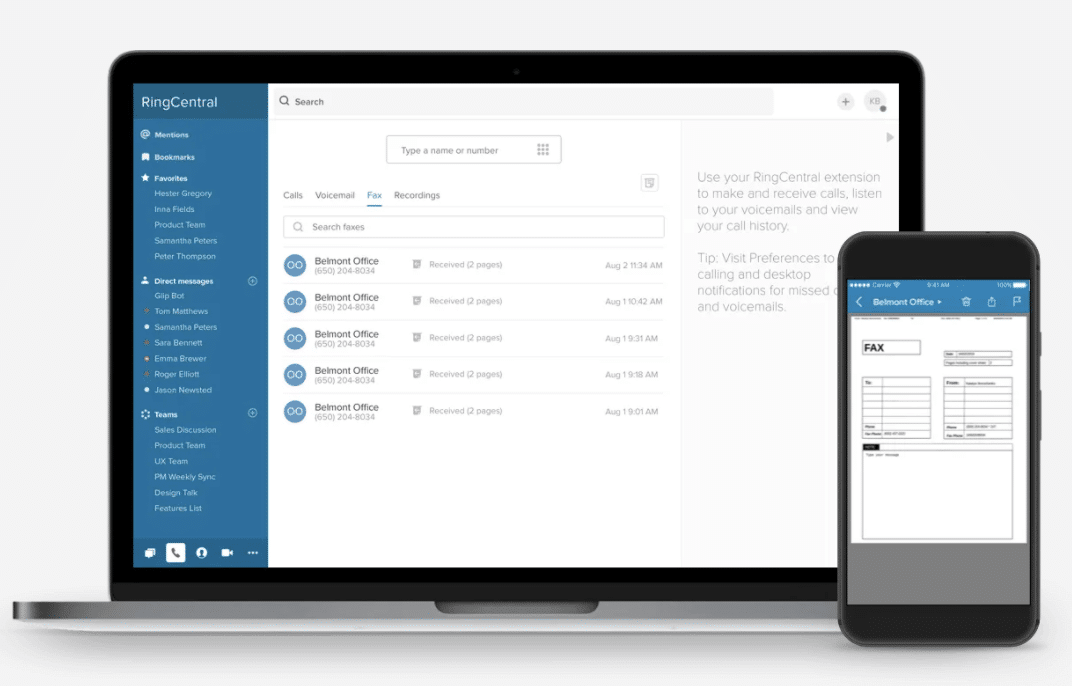Looking to cut costs as a small business? You’re not alone.
As a small business owner, you know that every penny counts. You’re likely dealing with lots of expenses associated with running a business, from the cost of goods or services to overhead costs like rent, utilities, and insurance.
Finding some cost-saving ideas can increase your profit margin and help your business thrive. Here are a few ideas to get you started:
1. Review your expenses regularly
2. Negotiate with suppliers
3. Make use of technology
4. Invest in a smart thermostat
5. Consider going virtual
6. Cut back on non-essential expenses
7. Reduce paper use
8. Use passive energy-saving techniques
9. Make your office more eco-friendly
10. Negotiate with your landlord
11. Switch banks
✏️ PRO TIP: Having a single vendor for all your business communications can cut costs… and headaches.
11 ways to cut costs for your small business
1. Review your expenses regularly
To maintain financial health, it’s crucial to regularly review your expenses, ensuring that your spending aligns with your budgetary goals. By consistently examining your expense report, you can pinpoint areas where cost reductions are feasible, such as identifying bulk purchasing opportunities for office supplies or renegotiating service contracts.
The areas in which you need to cut costs may change over time, or even month to month, which is why it’s always important to have a handle on it.
To review your expenses:
- Compare your monthly expenses to your budget
- Track your spending using accounting software or a personal finance app
- Review your bank and credit card statements every month
2. Negotiate with suppliers
If you’re happy with the quality of goods or services you’re getting from your suppliers, but not with the price, it may be time to negotiate. Let them know that you’re considering other options and see if they’re willing to give you a better deal.
- Ask for a volume discount. If you buy in bulk, you may be able to get a lower price per unit.
- Negotiate longer payment terms. If you’re able to pay your invoices within 30 days, some suppliers may be willing to give you a 2% discount.
- Compare prices. Get quotes from other suppliers to see if you’re getting the best deal.
- Consolidate vendors. If you use multiple vendors for the same type of product or service, see if you can get a discount by consolidating your business with one vendor. Many suppliers will offer a bulk discount. If they’re difficult to deal with or can’t give you a better price, it might be time to look elsewhere.
3. Cut costs by streamlining your technology
There are many cost-saving technologies available to small businesses, from cloud-based services like RingCentral to online accounting tools. By taking advantage of RingCentral MVP, you can save money, improve productivity, and streamline your business operations.
RingCentral MVP combines a wide range of features in one app, for all your business communications. Whether it’s phone calls, video chats, or team messaging, you’ll have every channel at your fingertips:

By using a single vendor for all of your communication needs, you can also avoid the hassle and expense of dealing with multiple vendors.
Many businesses also find that using RingCentral MVP improves their productivity. Implementing RingCentral’s call center solution also increases customer satisfaction, which leads to other cost savings like better customer retention and less churn.
4. Invest in a smart thermostat
A smart thermostat can help you save money on your energy bill by automatically adjusting the temperature based on your needs. For example, if you know that you’re going to be out of the office for a few hours, you can adjust the temperature so that you’re not wasting energy.
Smart thermostats will also allow you to program a schedule so that your office is always at a comfortable temperature. It can detect any occupants and automatically return to your preferred temperature, even if someone is there after hours.
You won’t be wasting energy when no one is there, but it will also override the schedule if it detects that someone is working late. You can also count on it to learn from patterns, which reduces the need to set a schedule at all.
Other perks of using a smart thermostat include:
- Reduced energy consumption
- Lower energy bills
- Improved comfort in the office
- Program scheduling
- Pattern learning
- Occupant detection
5. Consider going virtual to cut even more costs
If you don’t need a physical office space, consider going virtual. You can save money on rent, utilities, and other overhead costs by working from home or a coworking space.
This is made easier by products and services like RingCentral MVP, because you can have a virtual office with a local or toll-free number, as well as features like call forwarding and voicemail:

RingCentral also has integrated messaging features that will keep your team connected, no matter where they are. They can call and text from their mobile phone using a work number, and the mobile app syncs with the desktop app so they can sit down at their desk and pick up where they left off.
Intelligent call routing and a call center solution also make it easier to go virtual, because you won’t be leaving your customers in the lurch. They’ll still be able to contact you like they always do, and you can route their calls to the right person, no matter where that person is.
6. Cut non-essential expenses
There are always going to be expenses that you don’t need, so cut them out where you can. For example, if you’re spending money on advertising that isn’t bringing in any business, it’s time to cut that expense.
You should also take a close look at your inventory and get rid of any items that aren’t selling. It’s better to have less inventory on hand and save on storage costs than to keep stock that’s just taking up space.
Consolidating your communication tools into one vendor like RingCentral can also save you money. By using a single vendor for all of your communications needs, you can avoid the hassle and expense of dealing with multiple vendors and save money at the same time.

7. Reduce paper use
One of the easiest ways to save money is to reduce paper use. There are many ways to do this, from using double-sided printing to scanning documents and storing them electronically.
You can also save money by switching to e-bills and paperless statements. This will save you money on postage and paper costs and also help you stay organized.
An online payroll service can also help you save money by eliminating the need for paper checks. As an added bonus, you won’t be as susceptible to fraud.
If your company still relies a lot on faxing, you can reduce your paper use even further by faxing online: just one more powerful, cost-saving feature that comes included with RingCentral MVP. Send a fax via either RingCentral’s desktop or mobile app:

8. Use passive energy-saving techniques
LED lighting is much more energy-efficient than traditional lighting, so it’s a good idea to switch to LED bulbs where possible. This will save you money on your energy bill and help you be more environmentally friendly.
Double-paned windows are also more energy-efficient than single-paned windows. If you’re in the market for new windows, look for double-paned options.
You can also save money by insulating your office space. This will keep the heat in during the winter and the cool air in during the summer, so you won’t have to run the AC or heat as much.
9. Make your office more eco-friendly
In addition to saving money, making your office more eco-friendly will also help you attract and retain employees. Millennials are particularly interested in working for environmentally responsible companies.
There are many ways to make your office more eco-friendly, from using recycled paper to composting food waste. You can also install solar panels, which will save you money on your energy bill and give you a green image.
10. Negotiate with your landlord
Rent is often one of the biggest expenses for small businesses. If you’re not locked into a lease, consider moving to a less expensive location. You may also be able to negotiate a lower rent with your current landlord.
If you’re renting your office space, it’s important to negotiate with your landlord when your lease is up for renewal. If they know that you’re considering other options, they may be willing to give you a better deal.
You should also ask for any upgrades that you need, such as a new HVAC system or more energy-efficient windows. These upgrades will save you money in the long run, and your landlord may be willing to cover the cost.
11. Cut unnecessary costs by switching banks
If you’re paying too much in banking fees, it may be time to switch banks. There are many online-only banks that have low or no fees.
Regional banks are also a good option for small businesses. They typically have lower fees than national banks and offer a more personalized service. Plus, the rewards you get with a community or regional bank can be used to save money on everything from travel to office supplies.
You should also shop around for a better deal on business loans. If you have good credit, you may be able to get a lower interest rate on any loans you have or may need.
Cutting costs as a small business: What’s the secret?
Saving money is essential for any business, but it’s especially important for small businesses. With a limited budget, every penny counts.
From consolidating vendors and services to reducing or eliminating the things you don’t need, there are plenty of creative ways to make your cash go further.
By following these tips, you can save money and keep your business running smoothly.
RingCentral can help you reduce your communications expenses with its all-in-one communications platform. See our small business solutions to learn more.
Originally published May 18, 2022, updated Jul 22, 2024




